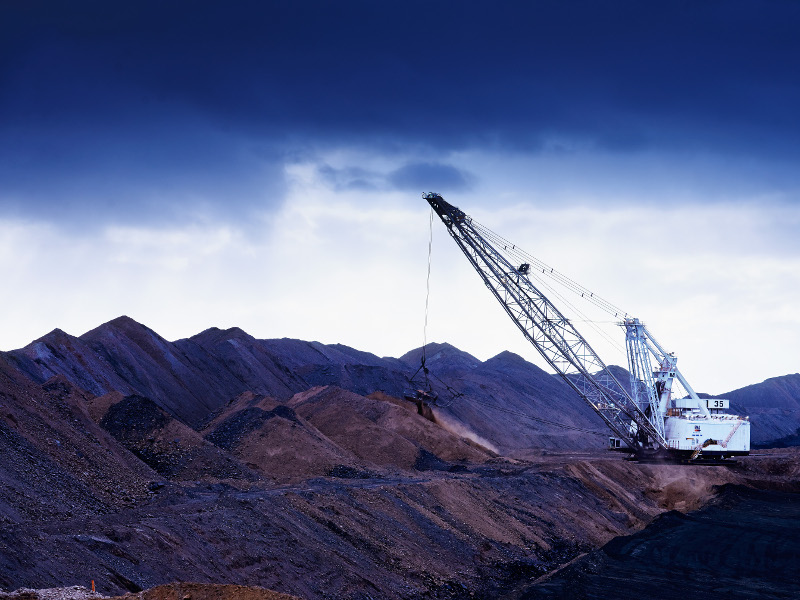An exploration firm is a firm whose goal is to discover new mineral deposits. Individual investors and venture capitalists often finance these companies, that are typically privately owned. They employ engineers, geologists as well as surveyors, cartographers or others to discover sites for extraction of mining. The discovery of a significant mineral resource can lead to the rapid expansion of an exploration company since it can access capital for future development projects.
Mineral exploration firms tend to be small- or medium-sized companies with annual revenues less than $10 million. These companies are largely privately owned and do not trade shares on an exchange. The information about them is therefore less accessible than other types of corporations. There are some publically traded exploration companies.
The mining industry is an untapped niche within the economy since it only starts production when new projects are identified and put into operation. So, in contrast to traditional service or manufacturing industries which produce their goods on a regular basis, mineral companies produce their products in bursts.

Exploration company revenues are very vulnerable to fluctuations in commodity prices due to the nature of the industry’s cycles. Because of factors like Chinese economic expansion, weather conditions that impact crop yields, and the need for petroleum transportation products, commodity prices can fluctuate greatly throughout the year.
Exploration companies’ revenue can fluctuate significantly over the course of a year because of fluctuations in the cost of commodities.
Exploration companies generally have a hard time raising capital during periods of high demand for natural resources. They are not only constrained in terms of revenue however they also have significant expenditures. In these periods, the industry is more likely to draw venture capital, which is able to keep exploration companies going until prices for commodities increase.
Because of the nature of the business, most exploration companies are not publically traded.
The Mineral Exploration industry is closely associated with other resource-based industries such as oil & gas production, coal mining and mining and metals. The majority of companies involved in mineral exploration also make products other resources.
The diversification of companies allows them to reduce exposure to fluctuations in commodity prices because they aren’t dependent on just one kind of resource. The differentiation of minerals is typically based on the basis of speculative-grade as well as inferred resources, which means there has not been any drilling.
Businesses often require additional exploration to convert inferred or speculative grades into indicated or measured reserves, or resources. Both of these are crucial for every mining endeavor. This kind of work is generally carried out by junior exploration companies who are specialized in mineral exploration in the early stages.
Exploring mineral resources involves large initial capital investments that could be extremely risky for exploration companies. It isn’t always guaranteed that they will find valuable minerals. When an ore body has been discovered an exploration company could spend considerable sums on pre-production expenditures such as the design of the mine, and buying longer-term resources for production.
It is important to weigh the costs of developing early against future profits as it could take many years before the mineral resources is made into a working mine. Many companies have partnered with larger companies who can finance projects with high costs to get them into production as part of this joint venture. The benefit for junior exploration companies is that they are able to concentrate on mineral exploration in the early stages and work with larger players that are in a position to finance later-stage exploration and development.
The success of mineral exploration companies is often dependent on their ability to raise capital or secure financing for projects from mining giants and/or financial institutions. This source of capital is crucial for junior exploration businesses because it is able to provide the funds needed to take a project through the early stages of development and exploration.
If you are looking to learn more, click mineral discovery
If an economic ore body is found and the pre-production costs can be completely funded, there will usually occur an initial public offering or sale of stock to raise more capital for the construction of a mine. If the company’s shares aren’t traded on any stock exchanges, the company could become bankrupt or taken over by a company who is more interested in mineral exploration.
Copper deposits with high-grade can be one of the most desirable commodities in the mining industry. They are able to bring in huge profits with small quantities of ore and only 0.3% to 0.7 percent copper by weight.
There are two kinds of mining companies: major and junior exploration firms. They differ in the sense that the former focuses on capital-intensive projects that are large and large that have resources that are proven to have stable reserves (e.g. production of bauxite as well as production of alumina) in contrast, those of the latter concentrate on exploration activities and high-risk resources (e.g. diamonds and gold).
Leave a Reply